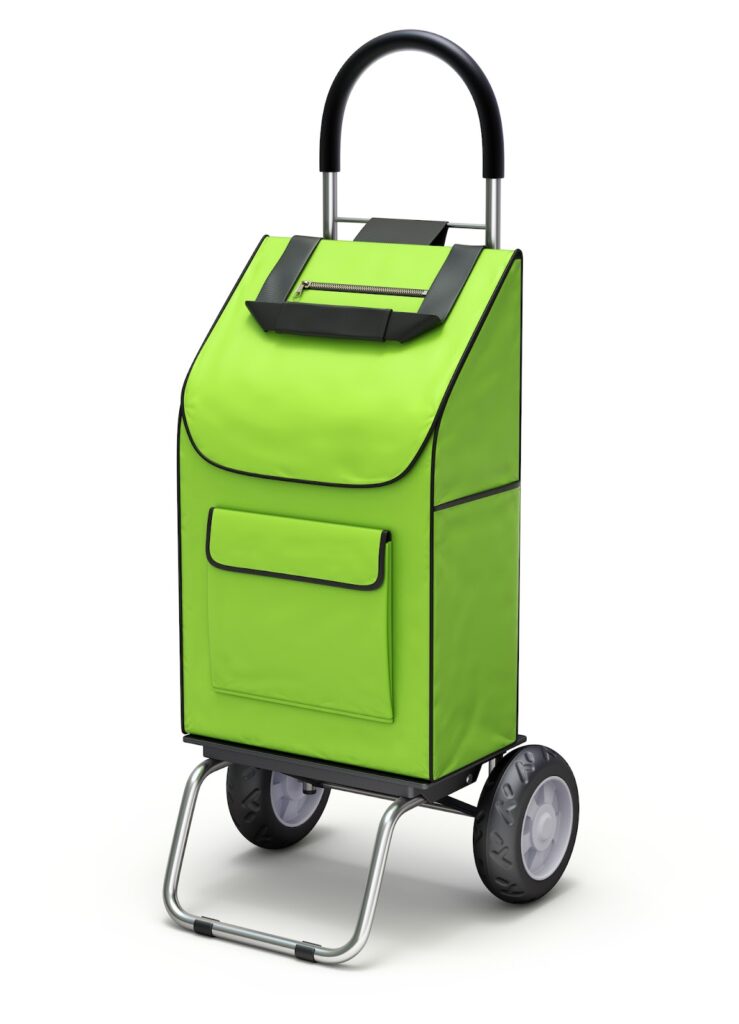Blog, Shopping Carts
Sales Trends: Insights for Shopping Utility Carts
All shopping carts have utility – indeed, the purpose of such a vessel is right in the name: to shop. However, shopping carts serve more than one function. In addition to helping your customers gather goods and navigate your store, these carts can serve as mobile advertisements, tools for stocking shelves, carriers for small children, and more. Moreover, the title of “utility cart” belongs to specific types of carts. In commercial settings, utility carts are designed to house tools and carry materials across large floor spaces on wheels. For shopping purposes, utility carts often refer to personal folding carts that customers purchase and bring to various stores in lieu of using the store’s shared baskets and carts.
Even if the majority of your customers simply use the vessels provided for them in your cart corrals, vestibules, and entrances, maintaining a supply of utility shopping carts is a smart move. After all, these products can encourage larger and more frequent purchases, and your business stands to benefit from the sale of said carts, too. Paying attention to your store’s sales trends can clue you in to whether or not it’s worth carrying these utility carts and how to optimize their use. Let’s explore in detail what your store’s sales trends can tell you about your utility shopping carts.
What Your Store’s Sales Trends Can Tell You About Your Utility Shopping Carts
The Types of Utility Carts You Should Offer
As mentioned above, utility carts can be broken down into two main categories: shopping carts and commercial-use carts. Both types of utility carts might be worth having on hand, depending on your store’s unique needs. Understanding your sales trends and operations will help you determine which kind(s) of utility carts are best suited for your business. For instance, if your store primarily serves an aging demographic that struggles to use your typical baskets and carts, you’re likely missing out on a number of purchases out of sheer inconvenience. By selling utility carts to these customers, you might be providing them with an easier method for gathering groceries and getting around your store, thereby boosting sales numbers over time. Likewise, if your business experiences operational inefficiencies when it comes to stocking shelves or carrying tools from point A to B, investing in commercial utility carts can speed up these processes, helping your bottom line.
How Many Customers Could Use Personal Shopping Carts
Perhaps you’ve determined that some of your customers stand to benefit from utility shopping carts. Now, you have to figure out exactly how many to provide. Once again, your store’s sales trends can shed some light on this question. Providing customers with a bonus or rewards card is a great way to keep track of not only what your customers are purchasing but also the size of your customer base. With enough of this data, you can roughly determine how many customers would get the most out of utility shopping carts so you can invest in the optimal amount.
The Size and Shape of Your Shopping Utility Carts
Like other types of carts, utility shopping carts come in a range of shapes and sizes. Most of these carts are collapsible, folding in on themselves to save space for easy storage in trunks and on public transportation. The most commonly used folding shopping carts are taller than they are wide, providing a somewhat narrow but deep vessel for customers to pack in decent-sized hauls of groceries. Some customers might prefer the opposite formation, however, opting for utility carts that resemble wagons (more shallow but wider and longer with a longer, retractable handle). You might offer both types of utility shopping carts for your customers, but it’s usually more cost-effective to stick with one variety. The shape and size of these carts should also be based on customer data. If most of your shoppers tend to make smaller purchases, they might only need a standard utility cart for their purposes. If, on the other hand, many of your customers prefer to make larger trips, they might need the additional space afforded by a larger, wider utility cart.
How Much to Spend on These Carts
Utility shopping carts constitute a unique investment for your business. Unlike typical carts and baskets that customers use and return afterward, customers must purchase these personal carts before using them. In this way, you can look at a utility shopping cart as another product to sell. At the same time, however, customers will use these personal carts to (ideally) make larger purchases at your store. With the right approach, then, you can see significant returns on your investment. Of course, the size of this ROI depends on several factors, including the cost that your business incurs when purchasing these carts, either individually or in bulk, the price for which you sell each cart individually, and the additional revenue generated from the use of each utility shopping cart over the long term. Keeping an eye on your sales trends can help you determine the optimal amount to spend on utility shopping carts to maximize this ROI.
A Utilitarian Shopping Choice
Utility shopping carts can greatly benefit both your bottom line and your customers, so long as you invest in the right amount of products with the optimal functionality, shape, size, and price point. Look to your sales trends to help you make the right call.
Good L Corporation delivers innovative shopping cart and basket solutions for retailers on a global scale. Good L Corp. can configure the right carryall strategy to boost your retail business, from a fleet of new custom carts to launch your store opening to replacement baskets that supplement your existing shop supply. Let’s get started! Contact us today for a no-pressure sales quote!


Request a Quote
Get a boost to your impulse sales which ultimately leads to an overall improvement of your total sales. Don’t you want to increase sales? Of course you do!